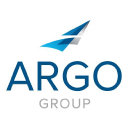DGICB

Donegal Group Inc.
DGICB
(2.5)14,12 USD
0.43% ROA
5.07% ROE
64.62x PER
476.376.640,00 USD
14.46% DER
4.75% Yield
2.54% NPM
Donegal Group Inc. Stock Analysis
Donegal Group Inc. Fundamental Analysis
Fundamental analysis in stock investing is like studying the foundation of a house before buying it. It involves looking at a company's financial health, like its earnings, assets, and debts, to determine if it's a good investment based on its fundamental strength and potential for growth.
| # | Analysis | Rating |
|---|---|---|
| 1 |
PBV
With a remarkably low PBV ratio (0.99x), the stock offers substantial upside potential at a bargain price. |
|
| 2 |
DER
The stock has a minimal amount of debt (7%) relative to its ownership, showcasing a strong financial position and lower risk for investors. |
|
| 3 |
Dividend Growth
The company has demonstrated exceptional dividend growth over the past five years, consistently increasing payouts to shareholders year after year. |
|
| 4 |
Dividend
Shareholders can rely on the company's remarkable dividend history, consistently paying dividends for the past five years, demonstrating a steadfast dedication to rewarding investors. |
|
| 5 |
ROE
ROE in an average range (2.04%) suggests satisfactory profitability and decent utilization of shareholders' equity. |
|
| 6 |
Buffet Intrinsic Value
The company's stock seems undervalued (999) by Warren Buffett's formula, indicating a promising investment opportunity as its intrinsic value exceeds the market price. |
|
| 7 |
ROA
The stock's ROA (-0.23%) suggests that it's struggling to generate profits from its assets, making it a risky choice for investment. |
|
| 8 |
Revenue Growth
Company has experienced no growth in revenue over the past three years, suggesting limited profitability and making it a less desirable investment opportunity. |
|
| 9 |
Net Profit Growth
Throughout the last five years, this company's net profit has remained unchanged, indicating a lack of growth and making it a less favorable investment option. |
|
| 10 |
Assets Growth
Regrettably, this company's revenue has shown no signs of growth over the past three years, suggesting limited potential for returns and making it a less appealing choice. |
|
| 11 |
Graham Number
The Graham number calculation reveals that this company's stock price is potentially inflated, implying that it may not be a desirable investment option. |
Donegal Group Inc. Technical Analysis
Technical analysis in stock investing is like reading the patterns on a weather map to predict future weather conditions. It involves studying past stock price movements and trading volumes to make predictions about where a stock's price might go next, without necessarily looking at the company's financial health.
| # | Analysis | Recommendation |
|---|---|---|
| 1 | Awesome Oscillator | Hold |
| 2 | MACD | Buy |
| 3 | RSI | Hold |
| 4 | Stoch RSI | Hold |
Donegal Group Inc. Price Chart
Financial Statements
Financial statements are like report cards for companies. They show how much money a company makes (income statement), what it owns and owes (balance sheet), and where it spends its money (cash flow statement), helping stock investors understand if a company is healthy and worth investing in.
Income Statements
An income statement for a company is like a scoreboard for its profits and losses. It shows how much money the company made (revenue) and how much it spent to make that money (expenses), helping stock investors see if a company is making a profit or not.
Revenue in stock investing is the total amount of money a company earns from its sales, and it's a key factor that investors consider to assess a company's financial performance and growth potential.
| Year | Revenue | Growth |
|---|---|---|
| 1986 | 6.500.000 | |
| 1987 | 31.800.000 | 79.56% |
| 1988 | 40.700.000 | 21.87% |
| 1989 | 51.600.000 | 21.12% |
| 1990 | 52.300.000 | 1.34% |
| 1991 | 58.500.000 | 10.6% |
| 1992 | 62.100.000 | 5.8% |
| 1993 | 77.700.000 | 20.08% |
| 1994 | 81.700.000 | 4.9% |
| 1995 | 97.885.060 | 16.53% |
| 1996 | 112.519.031 | 13.01% |
| 1997 | 121.327.606 | 7.26% |
| 1998 | 30.586.365 | -296.67% |
| 1999 | 159.711.107 | 80.85% |
| 2000 | 168.222.999 | 5.06% |
| 2001 | 185.163.623 | 9.15% |
| 2002 | 203.803.561 | 9.15% |
| 2003 | 214.992.328 | 5.2% |
| 2004 | 287.788.638 | 25.3% |
| 2005 | 319.847.194 | 10.02% |
| 2006 | 329.967.034 | 3.07% |
| 2007 | 340.618.294 | 3.13% |
| 2008 | 372.312.162 | 8.51% |
| 2009 | 101.526.000 | -266.72% |
| 2010 | 408.818.000 | 75.17% |
| 2011 | 475.018.000 | 13.94% |
| 2012 | 510.450.000 | 6.94% |
| 2013 | 544.202.000 | 6.2% |
| 2014 | 585.305.000 | 7.02% |
| 2015 | 635.110.000 | 7.84% |
| 2016 | 687.337.000 | 7.6% |
| 2017 | 737.405.000 | 6.79% |
| 2018 | 769.134.000 | 4.13% |
| 2019 | 812.156.000 | 5.3% |
| 2020 | 777.819.000 | -4.41% |
| 2021 | 816.466.000 | 4.73% |
| 2022 | 454 | -179838225.99% |
| 2023 | 935.712.000 | 100% |
| 2023 | 927.337.984 | -0.9% |
| 2024 | 987.090.184 | 6.05% |
Research and Development Expenses are the costs a company incurs to create and improve its products or services, which can be important for investors to evaluate a company's innovation and potential for future growth.
| Year | Research and Development Expenses | Growth |
|---|---|---|
| 1986 | 0 | |
| 1987 | 0 | 0% |
| 1988 | 0 | 0% |
| 1989 | 0 | 0% |
| 1990 | 0 | 0% |
| 1991 | 0 | 0% |
| 1992 | 0 | 0% |
| 1993 | 0 | 0% |
| 1994 | 0 | 0% |
| 1995 | 0 | 0% |
| 1996 | 0 | 0% |
| 1997 | 0 | 0% |
| 1998 | 0 | 0% |
| 1999 | 0 | 0% |
| 2000 | 0 | 0% |
| 2001 | 0 | 0% |
| 2002 | 0 | 0% |
| 2003 | 0 | 0% |
| 2004 | 0 | 0% |
| 2005 | 0 | 0% |
| 2006 | 0 | 0% |
| 2007 | 0 | 0% |
| 2008 | 0 | 0% |
| 2009 | 0 | 0% |
| 2010 | 0 | 0% |
| 2011 | 0 | 0% |
| 2012 | 0 | 0% |
| 2013 | 0 | 0% |
| 2014 | 0 | 0% |
| 2015 | 0 | 0% |
| 2016 | 0 | 0% |
| 2017 | 0 | 0% |
| 2018 | 0 | 0% |
| 2019 | 0 | 0% |
| 2020 | 0 | 0% |
| 2021 | 0 | 0% |
| 2022 | 0 | 0% |
| 2023 | 0 | 0% |
| 2023 | 0 | 0% |
| 2024 | 0 | 0% |
General and Administrative Expenses are the costs a company incurs to run its day-to-day operations, such as office rent, salaries, and utilities, which investors consider to understand a company's overall efficiency and management effectiveness.
| Year | General and Administrative Expenses | Growth |
|---|---|---|
| 1986 | 0 | |
| 1987 | 0 | 0% |
| 1988 | 0 | 0% |
| 1989 | 0 | 0% |
| 1990 | 0 | 0% |
| 1991 | 0 | 0% |
| 1992 | 0 | 0% |
| 1993 | 0 | 0% |
| 1994 | 0 | 0% |
| 1995 | 0 | 0% |
| 1996 | 0 | 0% |
| 1997 | 0 | 0% |
| 1998 | 0 | 0% |
| 1999 | 0 | 0% |
| 2000 | 0 | 0% |
| 2001 | 0 | 0% |
| 2002 | 0 | 0% |
| 2003 | 0 | 0% |
| 2004 | 0 | 0% |
| 2005 | 0 | 0% |
| 2006 | 0 | 0% |
| 2007 | 0 | 0% |
| 2008 | 0 | 0% |
| 2009 | 0 | 0% |
| 2010 | 0 | 0% |
| 2011 | 0 | 0% |
| 2012 | 0 | 0% |
| 2013 | 0 | 0% |
| 2014 | 0 | 0% |
| 2015 | 0 | 0% |
| 2016 | 0 | 0% |
| 2017 | 0 | 0% |
| 2018 | 0 | 0% |
| 2019 | 0 | 0% |
| 2020 | 0 | 0% |
| 2021 | 0 | 0% |
| 2022 | 0 | 0% |
| 2023 | 0 | 0% |
| 2023 | 0 | 0% |
| 2024 | 0 | 0% |
EBITDA stands for Earnings Before Interest, Taxes, Depreciation, and Amortization. It is a measure that helps stock investors analyze a company's profitability by looking at its earnings without considering certain expenses. This helps to get a clearer picture of the company's financial performance and its ability to generate cash flow.
| Year | EBITDA | Growth |
|---|---|---|
| 1986 | 100.000 | |
| 1987 | 2.000.000 | 95% |
| 1988 | 1.100.000 | -81.82% |
| 1989 | 200.000 | -450% |
| 1990 | 400.000 | 50% |
| 1991 | 0 | 0% |
| 1992 | 0 | 0% |
| 1993 | 0 | 0% |
| 1994 | 0 | 0% |
| 1995 | 0 | 0% |
| 1996 | 700.000 | 100% |
| 1997 | 15.473.543 | 95.48% |
| 1998 | 13.477.015 | -14.81% |
| 1999 | 6.100.723 | -120.91% |
| 2000 | 16.010.990 | 61.9% |
| 2001 | 10.466.704 | -52.97% |
| 2002 | 18.850.380 | 44.47% |
| 2003 | 28.256.236 | 33.29% |
| 2004 | 38.667.762 | 26.93% |
| 2005 | 55.596.787 | 30.45% |
| 2006 | 60.360.653 | 7.89% |
| 2007 | 58.179.925 | -3.75% |
| 2008 | 36.314.618 | -60.21% |
| 2009 | 24.975.384 | -45.4% |
| 2010 | 13.787.494 | -81.15% |
| 2011 | -505.968 | 2824.97% |
| 2012 | 34.167.664 | 101.48% |
| 2013 | 37.394.689 | 8.63% |
| 2014 | 2.280.782 | -1539.56% |
| 2015 | 5.463.117 | 58.25% |
| 2016 | 5.501.125 | 0.69% |
| 2017 | 4.488.264 | -22.57% |
| 2018 | -39.325.135 | 111.41% |
| 2019 | 64.233.403 | 161.22% |
| 2020 | 71.190.530 | 9.77% |
| 2021 | 37.071.922 | -92.03% |
| 2022 | 1.824.018 | -1932.43% |
| 2023 | -4.364.000 | 141.8% |
| 2023 | 10.009.735 | 143.6% |
| 2024 | -4 | 250243475% |
Gross profit is the money a company makes from selling its products or services after subtracting the cost of producing or providing them, and it is an important measure for investors to understand a company's profitability.
| Year | Gross Profit | Growth |
|---|---|---|
| 1986 | 6.500.000 | |
| 1987 | 31.800.000 | 79.56% |
| 1988 | 40.700.000 | 21.87% |
| 1989 | 51.600.000 | 21.12% |
| 1990 | 52.300.000 | 1.34% |
| 1991 | 58.500.000 | 10.6% |
| 1992 | 62.100.000 | 5.8% |
| 1993 | 77.700.000 | 20.08% |
| 1994 | 81.700.000 | 4.9% |
| 1995 | 97.885.060 | 16.53% |
| 1996 | 112.519.031 | 13.01% |
| 1997 | 121.327.606 | 7.26% |
| 1998 | 30.586.365 | -296.67% |
| 1999 | 159.711.107 | 80.85% |
| 2000 | 168.222.999 | 5.06% |
| 2001 | 185.163.623 | 9.15% |
| 2002 | 203.803.561 | 9.15% |
| 2003 | 214.992.328 | 5.2% |
| 2004 | 287.788.638 | 25.3% |
| 2005 | 319.847.194 | 10.02% |
| 2006 | 329.967.034 | 3.07% |
| 2007 | 340.618.294 | 3.13% |
| 2008 | 372.312.162 | 8.51% |
| 2009 | 101.526.000 | -266.72% |
| 2010 | 408.817.787 | 75.17% |
| 2011 | 475.017.619 | 13.94% |
| 2012 | 510.449.328 | 6.94% |
| 2013 | 544.202.000 | 6.2% |
| 2014 | 585.304.832 | 7.02% |
| 2015 | 635.110.034 | 7.84% |
| 2016 | 687.336.863 | 7.6% |
| 2017 | 737.404.932 | 6.79% |
| 2018 | 769.134.000 | 4.13% |
| 2019 | 812.156.000 | 5.3% |
| 2020 | 777.819.000 | -4.41% |
| 2021 | 816.466.000 | 4.73% |
| 2022 | 454 | -179838225.99% |
| 2023 | 935.712.000 | 100% |
| 2023 | 927.337.984 | -0.9% |
| 2024 | 986.778.184 | 6.02% |
Net income in stock investing is like the money a company actually gets to keep as profit after paying all its bills, and it's an important measure to understand how well a company is doing financially.
| Year | Net Profit | Growth |
|---|---|---|
| 1986 | 100.000 | |
| 1987 | 1.600.000 | 93.75% |
| 1988 | 800.000 | -100% |
| 1989 | 4.000.000 | 80% |
| 1990 | 4.400.000 | 9.09% |
| 1991 | 4.500.000 | 2.22% |
| 1992 | 4.900.000 | 8.16% |
| 1993 | 6.400.000 | 23.44% |
| 1994 | 6.100.000 | -4.92% |
| 1995 | 9.857.950 | 38.12% |
| 1996 | 8.896.113 | -10.81% |
| 1997 | 10.641.186 | 16.4% |
| 1998 | 9.017.840 | -18% |
| 1999 | 6.656.937 | -35.47% |
| 2000 | 8.887.357 | 25.1% |
| 2001 | 5.818.131 | -52.75% |
| 2002 | 12.002.722 | 51.53% |
| 2003 | 18.293.976 | 34.39% |
| 2004 | 31.614.269 | 42.13% |
| 2005 | 36.949.497 | 14.44% |
| 2006 | 40.214.722 | 8.12% |
| 2007 | 38.279.905 | -5.05% |
| 2008 | 25.541.978 | -49.87% |
| 2009 | 7.528.000 | -239.29% |
| 2010 | 11.467.000 | 34.35% |
| 2011 | 453.000 | -2431.35% |
| 2012 | 23.093.000 | 98.04% |
| 2013 | 26.322.000 | 12.27% |
| 2014 | 14.539.000 | -81.04% |
| 2015 | 26.770.000 | 45.69% |
| 2016 | 30.801.000 | 13.09% |
| 2017 | 7.116.000 | -332.84% |
| 2018 | -32.760.000 | 121.72% |
| 2019 | 47.152.000 | 169.48% |
| 2020 | 52.815.252 | 10.72% |
| 2021 | 25.254.174 | -109.13% |
| 2022 | -1.959.000 | 1389.14% |
| 2023 | -3.220.000 | 39.16% |
| 2023 | 4.425.504 | 172.76% |
| 2024 | 16.611.108 | 73.36% |
EPS, or earnings per share, is a measure that shows how much profit a company has earned for each outstanding share of its stock, and it is important for stock investors as it helps understand the profitability of a company and compare it with other companies in the market.
| Year | Earning per Share (EPS) | Growth |
|---|---|---|
| 1986 | 0 | |
| 1987 | 0 | 0% |
| 1988 | 0 | 0% |
| 1989 | 0 | 0% |
| 1990 | 0 | 0% |
| 1991 | 0 | 0% |
| 1992 | 0 | 0% |
| 1993 | 0 | 0% |
| 1994 | 0 | 0% |
| 1995 | 0 | 0% |
| 1996 | 0 | 0% |
| 1997 | 1 | 100% |
| 1998 | 1 | 0% |
| 1999 | 0 | 0% |
| 2000 | 1 | 0% |
| 2001 | 0 | 0% |
| 2002 | 1 | 0% |
| 2003 | 1 | 100% |
| 2004 | 1 | 0% |
| 2005 | 2 | 0% |
| 2006 | 2 | 0% |
| 2007 | 1 | 0% |
| 2008 | 1 | 0% |
| 2009 | 0 | 0% |
| 2010 | 0 | 0% |
| 2011 | 0 | 0% |
| 2012 | 1 | 0% |
| 2013 | 1 | 100% |
| 2014 | 1 | 0% |
| 2015 | 1 | 0% |
| 2016 | 1 | 100% |
| 2017 | 0 | 0% |
| 2018 | -1 | 100% |
| 2019 | 2 | 200% |
| 2020 | 2 | 0% |
| 2021 | 1 | 0% |
| 2022 | 0 | 0% |
| 2023 | 0 | 0% |
| 2023 | 0 | 0% |
| 2024 | 1 | 0% |
Cashflow Statements
Cashflow statements show the movement of money in and out of a company, helping stock investors understand how much money a company makes and spends. By examining cashflow statements, investors can assess if a company is generating enough cash to pay its bills, invest in growth, and provide returns to stockholders.
Free cash flow is the leftover cash that a company generates after covering its operating expenses and capital expenditures, which is important for stock investors as it shows how much money a company has available to invest in growth, pay dividends, or reduce debt.
| Year | Free Cashflow | Growth |
|---|---|---|
| 1989 | 6.100.000 | |
| 1990 | 7.900.000 | 22.78% |
| 1991 | 10.500.000 | 24.76% |
| 1992 | 10.500.000 | 0% |
| 1993 | 17.500.000 | 40% |
| 1994 | 13.400.000 | -30.6% |
| 1995 | 17.443.956 | 23.18% |
| 1996 | 19.117.969 | 8.76% |
| 1997 | 10.658.557 | -79.37% |
| 1998 | 5.901.826 | -80.6% |
| 1999 | 6.059.705 | 2.61% |
| 2000 | 18.597.140 | 67.42% |
| 2001 | 21.843.513 | 14.86% |
| 2002 | 33.524.165 | 34.84% |
| 2003 | 30.422.322 | -10.2% |
| 2004 | 33.475.978 | 9.12% |
| 2005 | 48.227.938 | 30.59% |
| 2006 | 32.902.454 | -46.58% |
| 2007 | 25.288.745 | -30.11% |
| 2008 | 51.751.744 | 51.13% |
| 2009 | 33.156.488 | -56.08% |
| 2010 | 21.353.643 | -55.27% |
| 2011 | 20.842.773 | -2.45% |
| 2012 | 24.220.543 | 13.95% |
| 2013 | 44.753.702 | 45.88% |
| 2014 | 42.387.126 | -5.58% |
| 2015 | 66.252.637 | 36.02% |
| 2016 | 59.645.915 | -11.08% |
| 2017 | 79.909.472 | 25.36% |
| 2018 | 63.670.609 | -25.5% |
| 2019 | 76.210.174 | 16.45% |
| 2020 | 101.044.698 | 24.58% |
| 2021 | 1.301.537.968 | 92.24% |
| 2022 | 95.400.020 | -1264.3% |
| 2023 | 94.400 | -100959.34% |
| 2023 | 28.579.043 | 99.67% |
| 2024 | 21.679.553 | -31.82% |
Operating cash flow represents the cash generated or consumed by a company's day-to-day operations, excluding external investing or financing activities, and is crucial for stock investors as it shows how much cash a company is generating from its core business operations.
| Year | Operating Cashflow | Growth |
|---|---|---|
| 1989 | 7.200.000 | |
| 1990 | 8.300.000 | 13.25% |
| 1991 | 10.700.000 | 22.43% |
| 1992 | 10.600.000 | -0.94% |
| 1993 | 17.900.000 | 40.78% |
| 1994 | 13.700.000 | -30.66% |
| 1995 | 17.778.850 | 22.94% |
| 1996 | 19.360.884 | 8.17% |
| 1997 | 13.417.408 | -44.3% |
| 1998 | 6.551.840 | -104.79% |
| 1999 | 6.503.203 | -0.75% |
| 2000 | 18.873.122 | 65.54% |
| 2001 | 22.004.782 | 14.23% |
| 2002 | 34.076.170 | 35.42% |
| 2003 | 30.793.799 | -10.66% |
| 2004 | 33.997.073 | 9.42% |
| 2005 | 48.931.538 | 30.52% |
| 2006 | 33.751.173 | -44.98% |
| 2007 | 26.652.367 | -26.63% |
| 2008 | 52.973.990 | 49.69% |
| 2009 | 34.097.508 | -55.36% |
| 2010 | 22.004.803 | -54.95% |
| 2011 | 21.081.311 | -4.38% |
| 2012 | 24.964.625 | 15.56% |
| 2013 | 46.008.469 | 45.74% |
| 2014 | 44.514.437 | -3.36% |
| 2015 | 66.404.173 | 32.96% |
| 2016 | 60.030.122 | -10.62% |
| 2017 | 81.000.198 | 25.89% |
| 2018 | 63.776.134 | -27.01% |
| 2019 | 76.359.777 | 16.48% |
| 2020 | 101.134.400 | 24.5% |
| 2021 | 76.731.968 | -31.8% |
| 2022 | 67.110.020 | -14.34% |
| 2023 | 94.400 | -70991.12% |
| 2023 | 28.623.744 | 99.67% |
| 2024 | 21.679.553 | -32.03% |
Capex, short for capital expenditures, refers to the money a company spends on acquiring or upgrading tangible assets like buildings, equipment, or technology, which is important for stock investors as it indicates how much a company is investing in its infrastructure to support future growth and profitability.
| Year | Capital Expenditure | Growth |
|---|---|---|
| 1989 | 1.100.000 | |
| 1990 | 400.000 | -175% |
| 1991 | 200.000 | -100% |
| 1992 | 100.000 | -100% |
| 1993 | 400.000 | 75% |
| 1994 | 300.000 | -33.33% |
| 1995 | 334.894 | 10.42% |
| 1996 | 242.915 | -37.86% |
| 1997 | 2.758.851 | 91.2% |
| 1998 | 650.014 | -324.43% |
| 1999 | 443.498 | -46.57% |
| 2000 | 275.982 | -60.7% |
| 2001 | 161.269 | -71.13% |
| 2002 | 552.005 | 70.78% |
| 2003 | 371.477 | -48.6% |
| 2004 | 521.095 | 28.71% |
| 2005 | 703.600 | 25.94% |
| 2006 | 848.719 | 17.1% |
| 2007 | 1.363.622 | 37.76% |
| 2008 | 1.222.246 | -11.57% |
| 2009 | 941.020 | -29.89% |
| 2010 | 651.160 | -44.51% |
| 2011 | 238.538 | -172.98% |
| 2012 | 744.082 | 67.94% |
| 2013 | 1.254.767 | 40.7% |
| 2014 | 2.127.311 | 41.02% |
| 2015 | 151.536 | -1303.83% |
| 2016 | 384.207 | 60.56% |
| 2017 | 1.090.726 | 64.78% |
| 2018 | 105.525 | -933.62% |
| 2019 | 149.603 | 29.46% |
| 2020 | 89.702 | -66.78% |
| 2021 | -1.224.806.000 | 100.01% |
| 2022 | -28.290.000 | -4229.47% |
| 2023 | 0 | 0% |
| 2023 | 44.701 | 100% |
| 2024 | 0 | 0% |
Balance Sheet
Balance sheets provide a snapshot of a company's financial health and its assets (such as cash, inventory, and property) and liabilities (like debts and obligations) at a specific point in time. For stock investors, balance sheets help assess the company's overall worth and evaluate its ability to meet financial obligations and support future growth.
Equity refers to the ownership interest or stake that shareholders have in a company, representing their claim on its assets and earnings after all debts and liabilities are paid.
| Year | Equity | Growth |
|---|---|---|
| 1986 | 19.800.000 | |
| 1987 | 18.500.000 | -7.03% |
| 1988 | 20.200.000 | 8.42% |
| 1989 | 24.400.000 | 17.21% |
| 1990 | 27.900.000 | 12.54% |
| 1991 | 32.200.000 | 13.35% |
| 1992 | 36.600.000 | 12.02% |
| 1993 | 57.300.000 | 36.13% |
| 1994 | 61.000.000 | 6.07% |
| 1995 | 72.282.892 | 15.61% |
| 1996 | 81.277.371 | 11.07% |
| 1997 | 91.596.663 | 11.27% |
| 1998 | 100.631.004 | 8.98% |
| 1999 | 103.414.612 | 2.69% |
| 2000 | 113.745.255 | 9.08% |
| 2001 | 120.928.349 | 5.94% |
| 2002 | 133.182.850 | 9.2% |
| 2003 | 208.649.232 | 36.17% |
| 2004 | 242.704.314 | 14.03% |
| 2005 | 277.896.186 | 12.66% |
| 2006 | 320.802.262 | 13.37% |
| 2007 | 352.690.191 | 9.04% |
| 2008 | 363.583.865 | 3% |
| 2009 | 385.506.000 | 5.69% |
| 2010 | 380.102.810 | -1.42% |
| 2011 | 383.451.000 | 0.87% |
| 2012 | 400.034.000 | 4.15% |
| 2013 | 396.877.000 | -0.8% |
| 2014 | 416.135.000 | 4.63% |
| 2015 | 408.388.000 | -1.9% |
| 2016 | 438.615.000 | 6.89% |
| 2017 | 448.696.000 | 2.25% |
| 2018 | 398.870.000 | -12.49% |
| 2019 | 451.016.000 | 11.56% |
| 2020 | 517.774.000 | 12.89% |
| 2021 | 531.036.000 | 2.5% |
| 2022 | 483.593.000 | -9.81% |
| 2023 | 473.340.000 | -2.17% |
| 2023 | 479.745.354 | 1.34% |
| 2024 | 484.075.867 | 0.89% |
Assets represent the valuable resources that a company owns, such as cash, inventory, property, and equipment, and understanding a company's assets helps investors assess its value and potential for generating future profits.
| Year | Assets | Growth |
|---|---|---|
| 1986 | 36.600.000 | |
| 1987 | 45.600.000 | 19.74% |
| 1988 | 63.500.000 | 28.19% |
| 1989 | 74.700.000 | 14.99% |
| 1990 | 86.700.000 | 13.84% |
| 1991 | 96.700.000 | 10.34% |
| 1992 | 111.400.000 | 13.2% |
| 1993 | 169.500.000 | 34.28% |
| 1994 | 192.000.000 | 11.72% |
| 1995 | 235.704.366 | 18.54% |
| 1996 | 273.128.543 | 13.7% |
| 1997 | 304.104.505 | 10.19% |
| 1998 | 385.231.506 | 21.06% |
| 1999 | 399.732.657 | 3.63% |
| 2000 | 439.100.801 | 8.97% |
| 2001 | 456.632.372 | 3.84% |
| 2002 | 501.218.164 | 8.9% |
| 2003 | 602.036.042 | 16.75% |
| 2004 | 735.415.401 | 18.14% |
| 2005 | 781.421.588 | 5.89% |
| 2006 | 831.697.811 | 6.05% |
| 2007 | 834.095.756 | 0.29% |
| 2008 | 880.109.036 | 5.23% |
| 2009 | 935.602.000 | 5.93% |
| 2010 | 1.174.619.523 | 20.35% |
| 2011 | 1.290.793.000 | 9% |
| 2012 | 1.336.889.000 | 3.45% |
| 2013 | 1.385.411.000 | 3.5% |
| 2014 | 1.458.655.000 | 5.02% |
| 2015 | 1.537.834.000 | 5.15% |
| 2016 | 1.623.131.000 | 5.26% |
| 2017 | 1.737.920.000 | 6.6% |
| 2018 | 1.832.078.000 | 5.14% |
| 2019 | 1.923.161.000 | 4.74% |
| 2020 | 2.160.520.000 | 10.99% |
| 2021 | 2.255.175.000 | 4.2% |
| 2022 | 2.243.349.000 | -0.53% |
| 2023 | 2.260.277.000 | 0.75% |
| 2023 | 1.675.039.760 | -34.94% |
| 2024 | 1.708.072.488 | 1.93% |
Liabilities refer to the financial obligations or debts that a company owes to creditors or external parties, and understanding a company's liabilities is important for investors as it helps assess the company's financial risk and ability to meet its obligations.
| Year | Liabilities | Growth |
|---|---|---|
| 1986 | 16.800.000 | |
| 1987 | 27.100.000 | 38.01% |
| 1988 | 43.300.000 | 37.41% |
| 1989 | 50.300.000 | 13.92% |
| 1990 | 58.800.000 | 14.46% |
| 1991 | 64.500.000 | 8.84% |
| 1992 | 74.800.000 | 13.77% |
| 1993 | 112.200.000 | 33.33% |
| 1994 | 131.000.000 | 14.35% |
| 1995 | 163.421.474 | 19.84% |
| 1996 | 191.851.172 | 14.82% |
| 1997 | 212.507.842 | 9.72% |
| 1998 | 284.600.502 | 25.33% |
| 1999 | 296.318.045 | 3.95% |
| 2000 | 325.355.546 | 8.92% |
| 2001 | 335.704.023 | 3.08% |
| 2002 | 368.035.314 | 8.78% |
| 2003 | 393.386.810 | 6.44% |
| 2004 | 492.711.087 | 20.16% |
| 2005 | 503.525.402 | 2.15% |
| 2006 | 510.895.549 | 1.44% |
| 2007 | 481.405.565 | -6.13% |
| 2008 | 516.525.171 | 6.8% |
| 2009 | 550.096.000 | 6.1% |
| 2010 | 794.516.713 | 30.76% |
| 2011 | 907.342.000 | 12.43% |
| 2012 | 936.855.000 | 3.15% |
| 2013 | 988.534.000 | 5.23% |
| 2014 | 1.042.520.000 | 5.18% |
| 2015 | 1.129.446.000 | 7.7% |
| 2016 | 1.184.516.000 | 4.65% |
| 2017 | 1.289.224.000 | 8.12% |
| 2018 | 1.433.208.000 | 10.05% |
| 2019 | 1.472.145.000 | 2.64% |
| 2020 | 1.642.746.000 | 10.39% |
| 2021 | 38.946.105 | -4118% |
| 2022 | 1.759.756.000 | 97.79% |
| 2023 | 35.000.000 | -4927.87% |
| 2023 | 1.195.294.406 | 97.07% |
| 2024 | 1.223.996.621 | 2.34% |
Donegal Group Inc. Financial Ratio (TTM)
Valuation Metrics
- Revenue per Share
- 29.25
- Net Income per Share
- 0.22
- Price to Earning Ratio
- 64.62x
- Price To Sales Ratio
- 0.5x
- POCF Ratio
- 11.27
- PFCF Ratio
- -183.93
- Price to Book Ratio
- 0.98
- EV to Sales
- 0.51
- EV Over EBITDA
- -3609.76
- EV to Operating CashFlow
- 11.58
- EV to FreeCashFlow
- -188.09
- Earnings Yield
- 0.02
- FreeCashFlow Yield
- -0.01
- Market Cap
- 0,48 Bil.
- Enterprise Value
- 0,49 Bil.
- Graham Number
- 8.6
- Graham NetNet
- -6725.89
Income Statement Metrics
- Net Income per Share
- 0.22
- Income Quality
- 5.74
- ROE
- 0.02
- Return On Assets
- 0.01
- Return On Capital Employed
- 0.12
- Net Income per EBT
- 0.82
- EBT Per Ebit
- 0.16
- Ebit per Revenue
- 0.19
- Effective Tax Rate
- 0.18
Margins
- Sales, General, & Administrative to Revenue
- 0
- Research & Developement to Revenue
- 0
- Stock Based Compensation to Revenue
- 0
- Gross Profit Margin
- 1
- Operating Profit Margin
- 0.19
- Pretax Profit Margin
- 0.03
- Net Profit Margin
- 0.03
Dividends
- Dividend Yield
- 0.05
- Dividend Yield %
- 4.75
- Payout Ratio
- 3.05
- Dividend Per Share
- 0.69
Operating Metrics
- Operating Cashflow per Share
- 1.28
- Free CashFlow per Share
- -0.08
- Capex to Operating CashFlow
- 1.06
- Capex to Revenue
- 0.05
- Capex to Depreciation
- 11.07
- Return on Invested Capital
- 0.25
- Return on Tangible Assets
- 0
- Days Sales Outstanding
- 250.9
- Days Payables Outstanding
- 18446.26
- Days of Inventory on Hand
- -2066649640.04
- Receivables Turnover
- 1.45
- Payables Turnover
- 0.02
- Inventory Turnover
- -0
- Capex per Share
- 1.36
Balance Sheet
- Cash per Share
- 4,14
- Book Value per Share
- 14,73
- Tangible Book Value per Share
- 14.53
- Shareholders Equity per Share
- 14.73
- Interest Debt per Share
- 2.15
- Debt to Equity
- 0.14
- Debt to Assets
- 0.04
- Net Debt to EBITDA
- -79.84
- Current Ratio
- 0.51
- Tangible Asset Value
- 0,48 Bil.
- Net Current Asset Value
- -0,86 Bil.
- Invested Capital
- -338503616
- Working Capital
- -0,35 Bil.
- Intangibles to Total Assets
- 0
- Average Receivables
- 0,65 Bil.
- Average Payables
- 0,00 Bil.
- Average Inventory
- -438211699500
- Debt to Market Cap
- 0.15
Dividends
Dividends in stock investing are like rewards that companies give to their shareholders. They are a portion of the company's profits distributed to investors, typically in the form of cash payments, as a way for them to share in the company's success.
| Year | Dividends | Growth |
|---|---|---|
| 1990 | 0 | |
| 1991 | 0 | 0% |
| 1992 | 0 | 0% |
| 1993 | 0 | 0% |
| 1994 | 0 | 0% |
| 1995 | 0 | 0% |
| 1996 | 0 | 0% |
| 1997 | 0 | 0% |
| 1998 | 0 | 0% |
| 1999 | 0 | 0% |
| 2000 | 0 | 0% |
| 2001 | 0 | 0% |
| 2002 | 0 | 0% |
| 2003 | 0 | 0% |
| 2004 | 0 | 0% |
| 2005 | 0 | 0% |
| 2006 | 0 | 0% |
| 2007 | 0 | 0% |
| 2008 | 0 | 0% |
| 2009 | 0 | 0% |
| 2010 | 0 | 0% |
| 2011 | 0 | 0% |
| 2012 | 0 | 0% |
| 2013 | 0 | 0% |
| 2014 | 0 | 0% |
| 2015 | 0 | 0% |
| 2016 | 0 | 0% |
| 2017 | 0 | 0% |
| 2018 | 0 | 0% |
| 2019 | 1 | 0% |
| 2020 | 1 | 0% |
| 2021 | 1 | 0% |
| 2022 | 1 | 0% |
| 2023 | 1 | 0% |
| 2024 | 0 | 0% |
Donegal Group Inc. Profile
About Donegal Group Inc.
Donegal Group Inc., an insurance holding company, provides personal and commercial lines of property and casualty insurance to businesses and individuals. It operates through three segments: Investment Function, Personal Lines of Insurance, and Commercial Lines of Insurance. The company offers private passenger automobile policies that provide protection against liability for bodily injury and property damage arising from automobile accidents, as well as protection against loss from damage to automobiles; and homeowners policies, which provide coverage for damage to residences and their contents from a range of perils, including fire, lightning, windstorm, and theft, as well as liability of the insured arising from injury to other persons or their property. It also offers commercial automobile policies that provide protection against liability for bodily injury and property damage arising from automobile accidents and protection against loss from damage to automobiles owned by the insured; commercial multi-peril policies that provide protection to businesses against combining liability and physical damage coverages; and workers' compensation policies, which provide benefits to employees for injuries sustained during employment. The company markets its insurance products primarily to Mid-Atlantic, Midwestern, New England, Southern, and Southwestern regions through approximately 2,300 independent insurance agencies. Donegal Group Inc. was incorporated in 1986 and is headquartered in Marietta, Pennsylvania.
- CEO
- Mr. Kevin Gerard Burke
- Employee
- 872
- Address
-
1195 River Road
Marietta, 17547-0302
Donegal Group Inc. Executives & BODs
| # | Name | Age |
|---|---|---|
| 1 |
Mr. Jeffery Tim Hay Senior Vice President |
70 |
| 2 |
Mr. William Daniel DeLamater Executive Vice President & Chief Operating Officer |
70 |
| 3 |
Mr. Kevin Gerard Burke President, Chief Executive Officer & Chairman |
70 |
| 4 |
Mr. Robert Richard Long Jr. Senior Vice President & General Counsel |
70 |
| 5 |
Mr. Jeffrey Dean Miller Executive Vice President & Chief Financial Officer |
70 |
| 6 |
Mr. Sanjay Pandey Senior Vice President & Chief Information Officer |
70 |
| 7 |
Mr. Daniel John Wagner Senior Vice President & Treasurer |
70 |
| 8 |
Mr. Vincent Anthony Viozzi Senior Vice President & Chief Investment Officer |
70 |
| 9 |
Ms. Christina Marie Hoffman Senior Vice President & Chief Risk Officer |
70 |
| 10 |
Mr. William Albert Folmar Senior Vice President |
70 |








